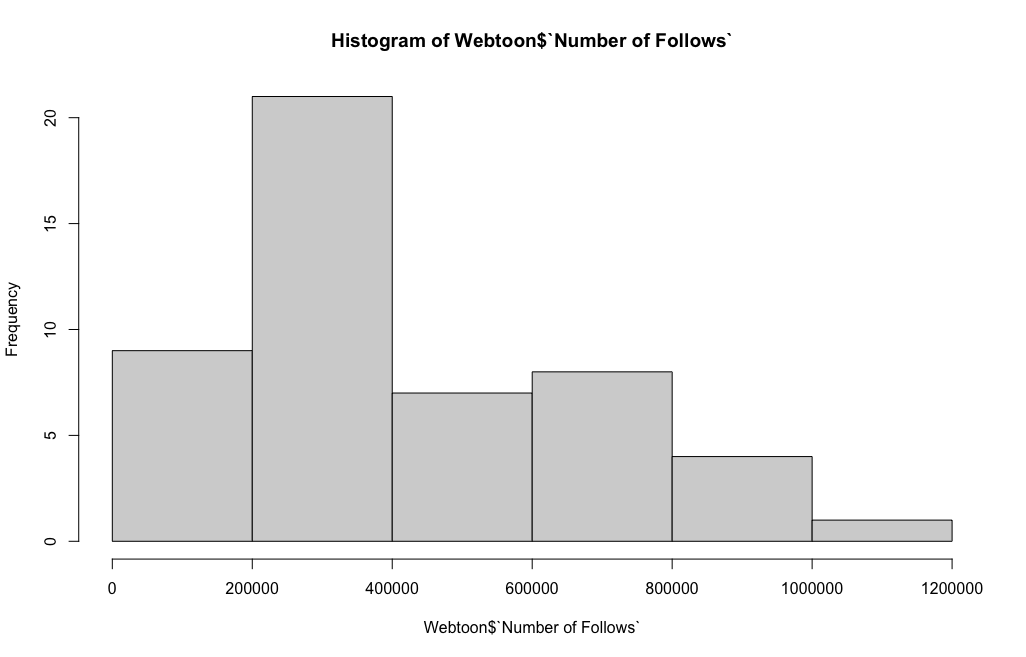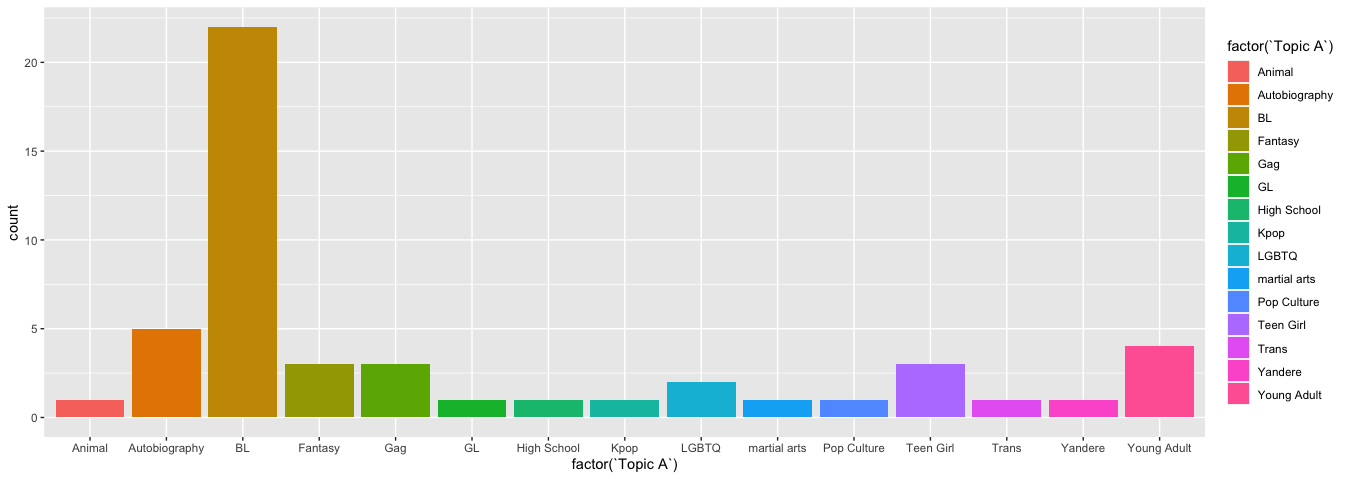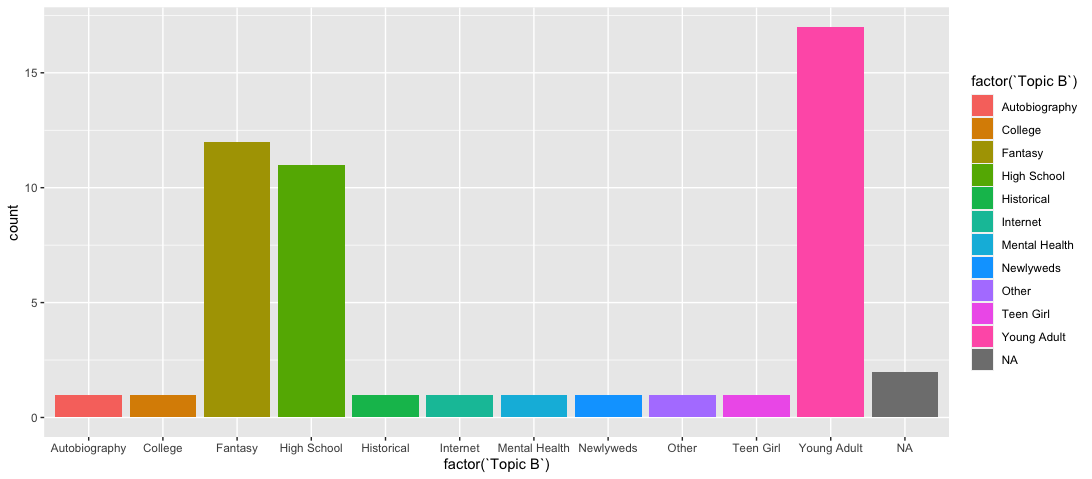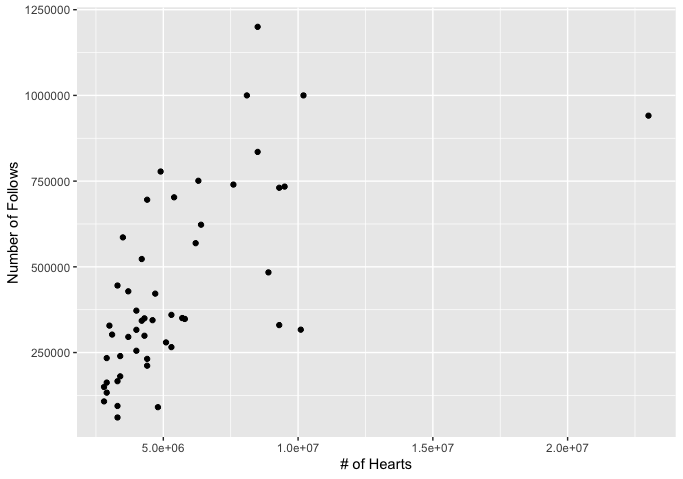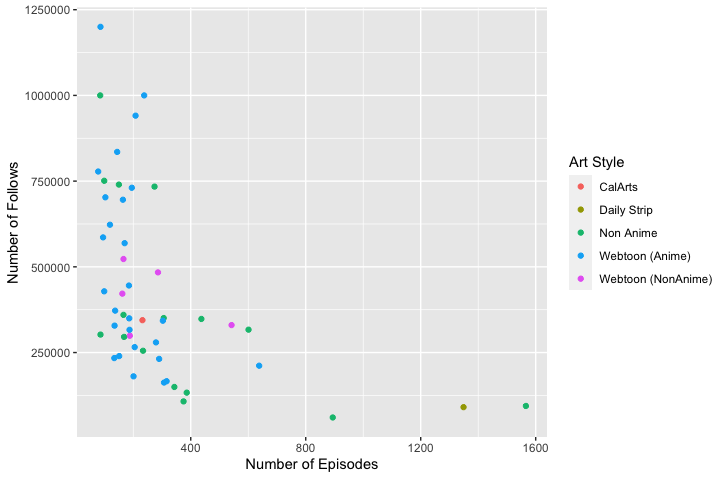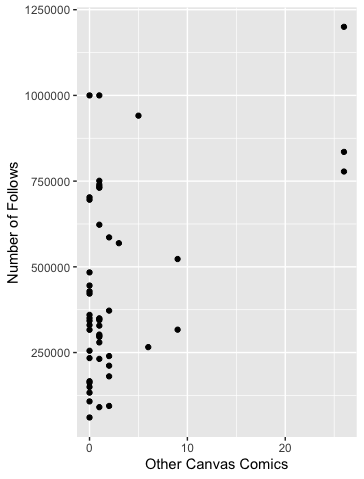Introduction
Naver Webtoon, introduced in “Hallyu 3.0: The Webtoon Takeover,” is the world’s leading webcomics reading application with over 72 million monthly users. Much like Youtube and Spotify, Webtoon manages a user-generated content platform featuring the works of over 130,000 amateur and professional cartoonists. Comics that are uploaded to Webtoon’s user-generated content section, Webtoon Canvas, and have at least 1,000 subscribers and 40,000 monthly page views earn a 50% share of Webtoon’s advertising revenue. Webtoon offers additional payout opportunities including a creator rewards program and their Original Series publishing program that offers exclusive rights publishing contracts and promotion through the platform. This article returns to the question posed in the previous article: How to content generators incorporate Webtoon into their professional practice and to what measures of success?
This article takes a first step down the path to answering the above question through an analysis of the Top 50 Webtoons. Through this analysis, readers will better understand what kind of user-generated content generates the most value on the platform. Furthermore, readers will understand the strategies that content creators use to increase their following on the platform, and ultimately increase earnings. These findings are valuable to a cartoonist who intends to incorporate Webtoon into their practice, however, this investigation serves a broader function for Arts Managers. This article presents the methods of study so that can access an epistemological tool for understanding user dynamics for platforms in their media of interest. By focusing on the 50 highest ranking user-generated comics, this study maps the patterns of the top .04% of users. The results lay the groundwork for a future comparative study using random sampling from the entire body of webtoons uploaded to Webtoon Canvas.
Step 1: Constructing The Data Set
The dataset was constructed by going to the All Comics section of Webtoon Canvas and ordering the content from most hearts to least. Hearts are a digital memento left by readers to show appreciation for a particular chapter of a comic. They can be used to understand which comics have left the most positive impressions on readers. Once the ordered rankings were set, the following data points were obtained through observations of 24 variables:
1. Data Observed directly from Webtoon:
Rank, Title; 3. Author, Number of Hearts, Number of Follows (Subscribers), Genre 1, Genre 2, Start Year, and Number of Episodes.
2. Assessed Data from Webtoon:
The Next Set of data taken was based on qualitative and quantitative assessments of the descriptions and read-through of chapter installments of each comic. Art Style and Topic were determined qualitatively and given corresponding tags. Each webtoon featured in the study received up to two tags. Furthermore, the frequency of chapters installed in the past two months was measured. The variables included were:
Art Style, Topic A, Topic B, and Frequency of Posts in Past Two Months.
3. Investigative Data from External Sources:
The last set of data required the researcher to scour the internet to understand how Webtoon is incorporated into a content-generator’s broader practice. Data measured in this set included:
Author Nationality, Webtoon Originals, Other Canvas Comics, Other Platforms Engaged On, Patreon, Instagram, Twitter, Tapas, Deviant Art, and Print Published by Third Party.
In collecting the data, best attempts were made to ensure its accuracy, however the numbers reported are estimates. The Other Platforms Engaged On column measured the number of platforms on which the author of a comic uploaded content. This could be in the form of a social media post, such as on Twitter or Instagram, a video or streaming post such as on Youtube and Twitch, or other uploaded comic content such as on a Tumblr page, personal blog site, Patreon, or another webcomic platform. Some of the globally-based authors may be active on other platforms that are not readily accessible in English, and thus may have been miscounted.
Step 2: The Questions
This study was guided by the broad question, how do content creators incorporate Webtoons into a professional practice? This question includes two particular groups of interest who determine the nature of content available and its popularity, content producers (cartoonists), and content consumers (readers).
Consumer-determined questions:
What is the range in the total number of follows among the Webtoon top 50? What Art Styles are most prevalent among the Top 50? What Topics are most prevalent among the Top 50? What is the relationship between number of hearts on a comic and number of subscribers?
Demographic distribution of content creators:
What Nationalities are represented among the authors of the Top 50?
By answering these questions, the researcher can create cohorts of stylistically and topically similar comics that can be analyzed further against producer-determined variables.
Questions 6-12 are designed to illuminate how content producers create value on the Webtoon Platform.
User-determined questions:
To establish breadth of content distribution:
What is the relationship between number of platforms used by a creator and the number of subscribers?
To establish intensity of usage of Webtoon:
What is the relationship between frequency of posts and number of subscribers? What is the relationship between number of episodes and number of subscribers? What is the relationship between number of subscribers and Other Canvas Comics?
To establish trends over time:
What is the relationship between year published and number of follows?
To establish common practices among the Top 50:
What proportion of Top 50 users also use: Patreon, Instagram, Twitter, Tapas, or DeviantArt?
To Establish Relationships with the Print Comics Publishing Industry and audiences:
12. What proportion of Top 50 users are also published in print by a third-party?
Step 3: Statistical Analysis: Results
This section provides the method of analysis and answers to the questions posed in the previous section. Analysis was performed in R-Studio.
What is the distribution of the number of subscribers among the Top 50 Webtoons?
Method: Summary and Histogram of the Number of Subscribers
Answer: The range of subscribers in the Top 50 go from 1.2 million subscribers to 60,600. In this group, the median number of subscribers is 346,200 with a mean of 434,138. The distribution of this data has a right skew, implying that there are a select few extraordinarily popular Webtoons.
Figure 1: Visualization of the amount of subscribers for the top 50 Webtoons. Source: Author.
2. What Art Styles are most prevalent in the top 50?
1. Method: The following pie chart that illustrates the distribution of styles. The styles included were Webtoon (Anime), which features a heavily standardized style influenced by Korean and Japanese comics, Webtoon (NonAnime) which features a commonly seen Webtoon format, however artistic renderings do not fit within the Anime standards. NonAnime represents an “other group” for comics that do not fit these two parameters. Daily Strip comics share similarities with newspaper cartoons, and CalArts Style shares similarities with U.S. animated features such as Adventure Time and Stephen Universe.
2. Answer: There is a fairly balanced distribution among the various Art Styles. 54% of the Top 50 Webtoons are drawn in an Anime Style and 64% follow a Webtoon Convention. The remaining 36% represent a variety of artistic styles.
Figure 2: The art styles used in the top 50 Webtoons. Source: Author.
3. Question: Which Topics are most prevalent in the Top 50?
1. Method: The analysis of these findings required two bar charts, one with Topic A and the other With Topic B. Topic A refers to the most-heavily signaled topic, whereas Topic B represents a secondary topic. There is a degree of subjectivity when assigning the Topic Label to a comic which can impact the validity of the results. However, the analysis was conducted as objective as possible by labeling topics based on a webtoon’s self-identified signals in its title card and summary.
2. Answer: When assessing Topic A, there is a large spike in Webtoons with a BL label. BL stands for “Boy Love.” Comics in this theme are often labeled BL on their title card by choice of the content creator.
Figure 3: The most prevalent topics in the top 50 Webtoons. Source: Author
When Assessing Topic B, there is another large spike in Young Adult themed comics. There are two similarly sized spikes in Topic B for High School and Fantasy.
Figure 4: The second-most prevalent topics in the top 50 Webtoons. Source: Author.
4. Question: What is the relationship between number of hearts on a comic and number of subscribers?
1. Method: The goal of this question is to determine the correlation between positive interactions and number of subscribers. Correlation between the two variables was calculated.
2. Answer: Correlation is moderate and positive at .62. A scatter plot of the relationship can be viewed in Figure 5.
The number of hearts a comic gets is not an exact indicator of the number of subscribers a comic will get and vice-versa, however the two variables influence each other. More likes is correlated with more subscribers.
Figure 5: The correlation between number of followers and number of hearts (likes) for a a specific comic. Source: Author.
5. Question: What Nationalities are represented among the authors of the Top 50?
1. Method: To determine the geographic distribution of content creators the researcher created a table of the Author Nationality Column.
2. Answer: The majority of author nationalities could not be identified, however, among those that could be identified, content creators come from around the world. Three of the top comics come from Denmark, all of which are done by the author merryweatherthey. Eight of the authors are from the United States. Germany, Indonesia, and France each reported 2 comics in the top 50. The remaining nationalities represented are Brazil, Australia, England, Netherlands, Russia, Spain, Sweden, Thailand, and the United Arab Emirates, each with 1 comic represented. Interestingly, no Korean-authored comics were discovered in this process.
6. Question: What is the relationship between number of platforms used by a creator and the number of subscribers?
1. Method: To determine this relationship the the researcher calculated the correlation of these two variables and generated a scatterplot of the data.
2. Answer: The Correlation is weakly negative. (-.147). The scatterplot has a roughly triangular shape. The comics with the highest followings use between 4 and 8 platforms, whereas on average creators use 7.5 platforms with a 3rd quartile of 9.75 and a max of 15 platforms used. Taken as a whole, creators are uploading content to many places beyond Webtoon. The researcher hypothesizes that this is evidence of both a network effect that creators experience when uploading to multiple platforms. Visibility on a variety of platforms is a common technique among the Webtoons with the highest followings.
Figure 6: The correlation between the number of subscribers a comic creator has and how many platforms they post their work on. Source: Author.
7. Question: What is the relationship between frequency of posts in the past two months and number of subscribers?
1. Method: To determine this, the researcher calculated the correlation between these two variables.
2. Answer: Correlation between these two variables is weakly negative at -.33. This indicates that the episodes with a higher amount of subscribers posted less frequently in the past two months. However, this relationship is not very strong.
8. Question: What is the relationship between number of episodes published and number of subscribers?
1. Method: To test the relationship between the number of episodes and number of subscribers, the researcher calculated the correlation and created a scatter plot of the two variables setting number of episodes on the X-axis as a predictor variable.
2. Answer: Correlation is -.471, a moderately weak negative correlation. The lower bound of the number of episodes was 78. Median number of episodes produced was 192 episodes, while the mean number of episodes produced was 289. Among the three Webtoons with the lowest following were three with 1,566, 1,349, and 894 episodes. All three of these comics began in 2016 and 2017 and were of the Non-Anime, Non-Webtoon Style.
Figure 7: A scatterplot visualization of the relationship between the number of episodes of a series on Webtoons and the amount of subscribes it has. Source: Author.
Investigation of the residual plot determined that the relationship is not exactly linear. It appears that in general for Webtoons in the Top 50, the webtoons with the highest number of follows also have the least number of episodes.
9. Question: What is the relationship between number of subscribers and Other Canvas Comics?
1. Method: To test the relationship between the number of subscribers and other canvas comics, we will look at another scatterplot and test the correlation.
2. Answer: No conclusive evidence of a linear relationship other than to note that 60% of the authors featured in the Webtoon Canvas Top 50 have uploaded other comics to canvas.
Figure 8: User relationship between subscribers to a top 50 Webtoon comic and other comics posted by the same author. Source: Author.
10. Question: What is the relationship between year published and number of follows?
1. Method: To test this relationship, the researcher created a scatterplot of number of follows against the year published.
2. Answer: There is no clear relationship between these two variables.
Figure 9: Relationship between the number of followers and the year that the comic was published. Source: Author.
11. Question: What proportion of Top 50 users also use:
Patreon, Instagram, Twitter, Tapas, DeviantArt?
1. Method: These questions will be answered by calculating the proportion of content-creators who use these specific platforms to augment their practice.
2. Answer:
Patreon: 100% of the users have a Patreon.
Instagram: 92% of the users have an Instagram.
Twitter: 94% of the users have a Twitter.
Tapas: 78% of the users also upload content to Tapas, a competing webcomic publishing platform.
DeviantArt: Only 36% of the top 50 also have a Deviantart account. This indicates that it’s a common enough tool, but not to the same ubiquity as the other four platforms.
12. Question: What proportion of Top 50 users are also published in print by a third-party?
1. Method: The researcher calculated the proportion of content creators who were published in print by a third-party.
2. Answer: 18% of the top 50 Webtoons feature creators who are published in print by third parties. This evidences a decreasing reliance of Webtoons Canvas creators on “establishing” themselves with printed comics. Nonetheless, it also illustrates that Webtoon Canvas is a place where industry professionals publish their work.
Conclusion:
This study focused on consumption patterns and production strategies of Webtoon Canvas’ most popular webtoons. From a consumer perspective, it appears that within Webtoon’s user-base there is a highly supportive community for Boy Love themed comics drawn in an anime style. Furthermore, webtoons that focus on young adult, high school and fantasy topics are also highly popular. Based on this trend, the researcher poses the following question for a future study: Do the stylistic and thematic trends of the Webtoon Canvas’ most popular comics represent the entire population of user-generated content?
In addition to assessing popular content on the platform, the researcher has identified the following additional lessons:
Lesson 1: Creators come from all over the world.
At least 14 different nationalities are represented among creators in the top 50.
Lesson 2: The most popular content creators use diverse platforms to reach their audiences.
Mean number of digital content platforms used by creators was 7.5, including social media, personal websites, forums, web publishing platforms, and online stores.
Lesson 3: Patreon, Twitter, and Instagram are essential tools.
100% of the top 50 creators used Patreon and over 90% of the creators used instagram and twitter.
Lesson 4: Print Publishing Credentials Not Necessary
Only 18% of the top 50 creators were previously published in print by a third party, suggesting that Webtoon fulfills the same needs as some publishers. Furthermore this observation indicates that previously published authors utilize Webtoon to advance their digital audience engagement.
Lesson 5: Consistency Matters
The median number of episodes for a webtoon at this tier is 192. Most creators have been uploading content on the platform for at least two years.
Further Study:
This study has developed a methodology for analyzing production and consumption patterns on user-generated publishing platforms like Webtoon Canvas. This data set represents a very specific segment of the population; the most popular users. While this methodology is labor intensive to conduct at scale, it yields an attractive mixture of qualitative and quantitative data. For future study, the author recommends repeating the methodology of this study with a large randomized sample to answer the following question: Do the patterns observed in the most popular comics on Webtoon Canvas represent the patterns of behavior in that of the whole population? The conclusions drawn from such a comparative study will contribute to identifying opportunities for cartoonists to capitalize on while using Webtoon Canvas.
+ Resources
Boudreau, Kevin and Hagiu, Andrei, Platform Rules: Multi-Sided Platforms as Regulators (September 18, 2008). Available at SSRN: https://ssrn.com/abstract=1269966 or http://dx.doi.org/10.2139/ssrn.1269966
Buoye, Alexander, Arne De Keyser, Zeyang Gong, and Natalie Lao. “Intellectual Property Extensions in Entertainment Services: Marvel and DC Comics.” The Journal of services marketing 34, no. 2 (2020): 239–251.
Campus News Writer. “Digital Comics: The New Internet Revolution?”. New University Campus Newspaper. March 28th (2021). https://www.newuniversity.org/2021/03/28/digital-comics-the-new-internet-revolution/. Accessed September 21 2021.
Cho, Heekyoung. “The Webtoon: A New Form for Graphic Narrative.” The Comics Journal, July 18, 2016. http://www.tcj.com/the-webtoon-a-new-form-for-graphic-narrative/
Cho, Heekyoung. “The Platformization of Culture: Webtoon Platforms and Media Ecology in Korea and Beyond.” The Journal of Asian studies 80, no. 1 (2021): 73–93
“Connecting Australian and Korean Creatives with Innovation.” UOW Magazine. University of Wollongong Australia, 2019. https://magazine.uow.edu.au/research/newsletter/2019/UOW260979.html.
“DC and Webtoon Announce Creative Partnership.” DC, August 17, 2021. https:// www.dccomics.com/blog/2021/08/17/dc-and-webtoon-announce-creative-partnership.
“Drawing the Lines on Media Innovation between East and West.” UOW Magazine. University of Wollongong Australia, 2018. https://magazine.uow.edu.au/research/newsletter/2018/UOW247208.html. Gillespie, Tarleton. “The Politics of ‘platforms.’” New media & society 12, no. 3 (2010): 347–364.
Jenkins, Henry, Sam Ford, and Joshua Green. Spreadable Media Creating Value and Meaning in a Networked Culture New York: New York University Press, 2013.
Kim, Ji-Hyeon, and Jun Yu. “Platformizing Webtoons: The Impact on Creative and Digital Labor in South Korea.” Social media + society 5, no. 4 (2019): 205630511988017–.
“LINE Webtoon Makes SXSW Debut with ‘Women in Digital Comics’ Panel.” ICT Monitor


